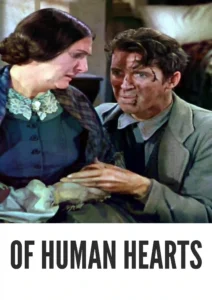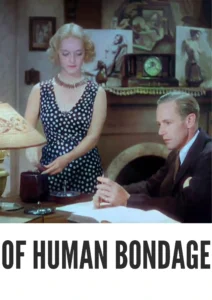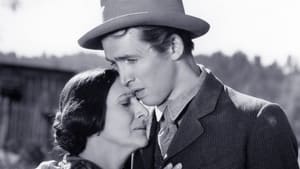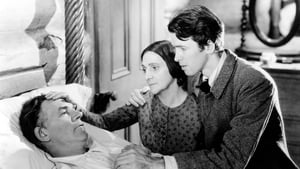Video Sources 0 Views

Download Of Human Hearts (1938) Colorized HD | James Stewart | Historical Romance Drama
Synopsis
Faith, Family, and the Civil War Era: Of Human Hearts (1938) in Vivid Color

Step back into 19th-century America with Of Human Hearts, a poignant historical romance drama from 1938, now beautifully colorized for a richer viewing experience. Previously known as Benefits Forgot, this film explores themes of faith, family, and resilience during the Civil War era. Featuring standout performances from Walter Huston and James Stewart, this HD download brings a classic tale of love and sacrifice to life. Perfect for fans of classic cinema and historical dramas, this movie offers a unique glimpse into American history and the human spirit.
Of Human Hearts Storyline: A Family’s Struggle During Tumultuous Times
Of Human Hearts tells the story of the Howells family, living in rural Ohio during the mid-19th century. Ethan Howell (Walter Huston) is a stern but loving minister, and his wife, Mary (Beulah Bondi), is a pillar of strength and devotion. Their son, Jason (played by Gene Reynolds as a child and James Stewart as a young man), shows great promise and ambition.As Jason grows up, he leaves home to pursue an education and a career, eventually becoming a doctor. The film explores the challenges and sacrifices faced by each family member as they navigate personal struggles and the turmoil of the Civil War. Ethan’s unwavering faith is tested, Mary’s maternal strength is challenged, and Jason must reconcile his ambitions with his family’s values. Of Human Hearts is a moving portrayal of love, loss, and the enduring bonds that tie families together.
Movie Cast
The film features a talented cast of actors who bring this historical drama to life:
- Walter Huston as Ethan Wilkins Howell
- Beulah Bondi as Mary Wilkins Howell
- James Stewart as Jason Wilkins Howell
- Gene Reynolds as Jason Wilkins Howell (as a Child)
- Guy Kibbee as Older Brother
Movie Genre
Of Human Hearts falls into the genre of historical romance drama, blending elements of romance, family drama, and historical context to create a compelling and emotional narrative. Its themes of faith, love, and sacrifice resonate across generations, making it a timeless classic.
Historical Context: The Prequel Era of the Civil War
Released in 1938, Of Human Hearts offers a glimpse into the pre-Civil War era and the challenges faced by families during this tumultuous period in American history. The film reflects the values and social norms of the time, while also exploring universal themes of love, loss, and redemption. As a product of Hollywood’s Golden Age, Of Human Hearts showcases the studio system’s ability to create grand, sweeping dramas that capture the imagination and touch the heart.
Colorization Details
This colorized version of Of Human Hearts has been carefully restored using modern digital techniques, enhancing the visual appeal while preserving the film’s original atmosphere and emotional depth. The colorization process involved meticulous analysis of the original black and white footage, with careful attention to detail in recreating the colors of the period. This painstaking process brings new life to the characters and settings, making the story even more engaging for modern audiences. While some may debate the merits of colorizing classic films, it introduces these films to a broader audience, ensuring their legacy for future generations.
Technical Details
- Director: Clarence Brown
- Screenplay: Bradbury Foote
- Based on: the story “Benefits Forgot” by Honoré Morrow
- Cinematography: Oliver T. Marsh
- Edited by: Frank E. Hull
- Production Company: Metro-Goldwyn-Mayer (MGM)
- Distributed by: Loew’s, Inc.
- Runtime: 85 minutes
Technical Specifications
- Download Format: MP4
- Resolution: HD (1080p)
- Compatibility: Compatible with most devices, including smartphones, tablets, computers, and smart TVs.
Reviews and Critical Reception
Of Human Hearts (1938) is celebrated for its heartfelt performances and its poignant portrayal of family life during a pivotal period in American history. Critics praised the film’s emotional depth, its stunning cinematography, and its ability to capture the spirit of the human heart. As a classic Hollywood drama, Of Human Hearts continues to resonate with audiences today.
FAQs
- Q: What is Of Human Hearts about?
- A: Of Human Hearts is a historical drama about a family’s struggles and triumphs during the 19th century and the Civil War era.
- Q: Is this version of Of Human Hearts colorized?
- A: Yes, this version has been professionally colorized to enhance the viewing experience.
- Q: What makes Of Human Hearts a classic film?
- A: Of Human Hearts is a classic film due to its heartfelt performances, its poignant story, and its exploration of universal themes.
- Q: What is the download format?
- A: The download format is MP4, which is compatible with most devices.
- Q: What resolution is the download?
- A: The resolution is HD (1080p), providing a high-quality viewing experience.
Download Now in HD!
Watch Of Human Hearts Today!












